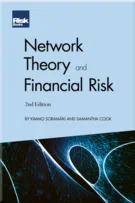Successor determinations
Successor determinations
Foreword
Preface
A credit default swap snapshot
Parties and key players
Documentation and standard trading conventions
Credit risk period, scheduled termination date and termination date
Fixed amounts, floating rate payer calculation amount and initial payment amount
Qualifying guarantee and qualifying affiliate guarantee
Reference obligation
Subordination and the senior non-preferred supplement
Outstanding principal balance and due and payable amount
Obligations and deliverable obligations
Credit event overview
Bankruptcy
Failure to pay
Repudiation/moratorium
Restructuring and redenomination
Governmental intervention and contingent convertible capital instruments
Successor determinations
Publicly available information and eligible information
Notices
Business day terms and timing rules
Event determination date and settlement methods
Auction settlement
Cash settlement
Physical settlement
Physical settlement fallback procedures
Orphaning
Fixed recovery transaction and reference obligation only trade
Novation and early termination
Economic sanctions: compliance challenges
Disclosures and regulations
Conclusion: at the ‘Exit Checkpoint’
Appendix
References
17.1 INTRODUCTION
The expedition moves to the other major event covered under the 2014 ISDA Credit Derivatives Definitions (henceforth the “2014 Definitions”; see International Swaps and Derivatives Association Inc. 2014b) concerning successions. This chapter focuses on successor determinations, which entail tracking the debt movement of “relevant obligations” of a reference entity. As debt transfer activity can be closely associated with a reorganisation of a reference entity, its capital structure or debt, these type of events typically involve activities such as mergers, amalgamations, transfer of assets or liabilities, demergers and spin-offs. This is unlike a restructuring credit event, which, as described in Chapter 15 (on Restructuring and redenomination), relates to a restructuring in connection with a specific debt obligation that can involve forgiveness of debt, and other events such as “subordination”, redenomination or extension to the maturity date of an obligation.
This chapter begins by providing a brief overview of the type of events which give rise to a successor determination, the impact of one or more successor identifications and the risks that can arise
Copyright Infopro Digital Limited. All rights reserved.
As outlined in our terms and conditions, https://www.infopro-digital.com/terms-and-conditions/subscriptions/ (point 2.4), printing is limited to a single copy.
If you would like to purchase additional rights please email info@risk.net
Copyright Infopro Digital Limited. All rights reserved.
You may share this content using our article tools. As outlined in our terms and conditions, https://www.infopro-digital.com/terms-and-conditions/subscriptions/ (clause 2.4), an Authorised User may only make one copy of the materials for their own personal use. You must also comply with the restrictions in clause 2.5.
If you would like to purchase additional rights please email info@risk.net









